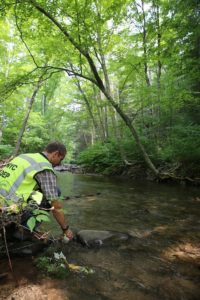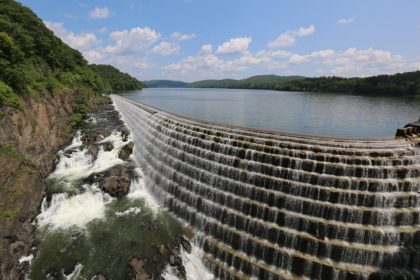Nosy Neighbor: Why does the tap water taste funny?
J. wrote to say: “We were wondering if you’ve heard anything about the tap water source switching back to normal? While I don’t taste a difference, my fiancé only tastes mold and has to boil our water before drinking. We understand the source was switched in December for 60ish days…”
Back when I was a reporter at The Riverdale Press, the city had a plan to build a water filtration plant on the Jerome Park Reservoir, a decommissioned city reservoir that is just west of Lehman College in the middle of Kingsbridge Heights. Neighbors educated themselves, banded together and successfully fought it off (in one of the best community organizing operations I have ever seen) and it was built not as far away as they had hoped (the construction unions made sure it was built in the city) but at least not in a residential neighborhood.
That is my long preamble to say that the city gets its water from two main watersheds: the Catskill and Delaware watershed areas in counties west of the Hudson that do not require filtration as per federal regs (Delaware, Greene, Schoharie, Sullivan and Ulster) and the Croton watershed in counties east of the Hudson (Putnam, Westchester and Dutchess). (A chunk of eastern Queens drinks groundwater.) It’s the Croton water that now gets filtered in Van Cortlandt Park in a giant plant buried under a nine-hole golf course. And there’s of course a Tribeca connection: the landscape design for the nine-acre green roof was done by Tribecan Ken Smith’s firm.
But I digress!
For the past two months, since Dec. 8, the city Department of Environmental Protection has been taking the Catskill offline in order to replace its century-old valves along the northern 74 miles of the aqueduct. While its out of service for 70 days, the other two sources — the Delaware and the Croton — are supplying the city’s water. As a result, the water might taste different, since it is coming from a new source. The work will continue for another week or so, the DEP spokesman said.
So the answer to J.’s question is yes, and no.
“Typically, any one of the City’s three upstate watersheds could be providing water to different parts of the City on any given day, at any given time,” he said. (You can see what the current source is here.) “The source water is always changing as we work to send the highest quality water to New Yorkers at all times. And of course the water is constantly tested to ensure it is safe, typically more than 350,000 times annually.”
Here’s more about taste and source:
“Some customers might experience a change in the taste of their water as these sources move through the distribution system. In fact, many parts of the city will receive water from one reservoir source during the daytime, and a completely different reservoir source at night. These changes are based upon daily fluctuations in water demand throughout the city. The difference in taste might be more noticeable in neighborhoods that receive water from multiple reservoir sources throughout a typical day. Those who notice the difference can try chilling their water or adding ice cubes to improve its taste.
“Please remember that New York City gets its drinking water from massive reservoirs that are located in different parts of the state, surrounded by different rocks and soil, and subject to natural processes that change their ecology. Colder temperatures in autumn cause water within our reservoirs to circulate from top to bottom, which can make the water taste different. The dropping temperatures also cause aquatic plants to produce organic compounds that can temporarily change the taste of the water. These harmless compounds are the same ones that give beets and corn their earthy flavor. As the deep cold of winter sets in, they typically go away.”
















Thank you for looking into this for us Pam!
NYC residents should send their concerns to 311, take down the complaint number, send to the local community board or elected official. It does not have to be this way.
As one of those involved at Jerome Park Reservoir organizing, we asked the DEP to adopt best practices around their upstate reservoirs. They chose to filter. Filtering does not remove taste or smell.
Hi Karen!! Hope you’re well!
Thanks for this info.
Just yesterday I mentioned the taste of the water to my husband and discussed purchasing the new Brita filter system and also discussed the hack done to a water supply upping the “lye’ content that was discovered as it was happening. That was an excellent article and especially liked the info that Ken Smith’s firm did the design for the green roof.
Pam, thanks very much for covering this. For any interested in delving further into this issue (and the loss of the Menhaden fish in the Hudson), Manhattan Community Board 1 has invited representatives from DEC and DEP to discuss Lower Manhattan water quality at the Environmental Protection Committee meeting on March 15 at 6:00 pm at https://live.mcb1.nyc.
elenortk8@gmail.com
This information is so interesting. I have wondered for many + years why the water can taste different day to day, day to night. Thanks Pam for seeking this out !